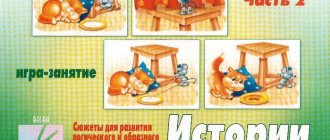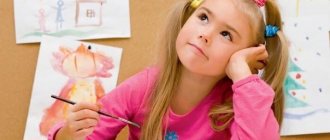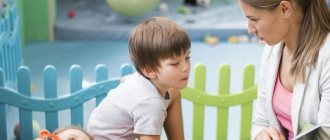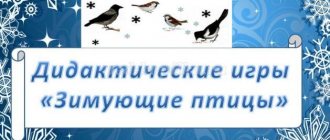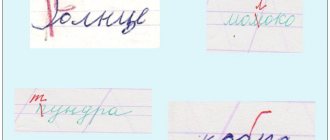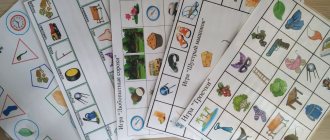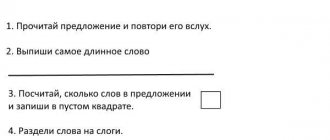Compiling a story based on a series of plot pictures develops speech, logic, thinking, observation, enriches vocabulary and provokes a serious thought process.
One of the basic aspects of preparing a child for school is the formation of coherent, understandable, logical speech in a preschooler.
Monologue speech is especially important in preparation for school, because preschoolers mainly use dialogues.
Compiling a story based on a series of cut-out plot pictures seems, although more complex, but much more interesting task for preschoolers than telling a story based on one static picture. In the case of a series of pictures, you can use a larger number of different verbs in different tenses, more descriptive phrases.
Such pictures also have a positive effect on logical thinking : after all, you need to establish the correct sequence of actions.
Fine motor skills are also involved : cutting pictures.
Compiling a story based on a series of pictures “Seasons”
These illustrations are more difficult for composing a story, since the story itself will be more descriptive: fewer verbs, more adjectives.
Note: the author of the illustrations is unknown, taken from open sources. If you know the artist, please post in the comments or via the Contact page so credit can be given!
Games based on the technique
It is advisable to start exercises based on sequences of pictures at an early age, at home or in kindergarten. This is necessary not so much to prepare for the test, but for the development of the kids. For the little ones, pictures depicting a single object that changes over time are suitable: for example, a flower growing from the ground, or a melting snowman.
Making a clay pot
This type of exercise can be offered to a 3-year-old child. It is important that in this case we are not testing speech, but only logical thinking, so the adult tells the story himself, writing it into the task itself:
- Lay out three cards in front of the baby, rearranging, for example, the last two.
- Invite the child to play potter, arranging the corresponding pictures in the correct order: “First we sculpt the pot itself, then we make handles for it, and now we add a lid.”
- Mix the cards and ask the child to correct the resulting mistakes.
Depending on how successfully the child accepts the game, it should be complicated or simplified. If he is not yet able to independently arrange the pictures in the correct order, he should not insist or show dissatisfaction in any way.
To make it more interesting for your little one to complete the task, give it a playful form: come up with a funny name for the potter, offer to paint the pot.
Ask me!
A game for older preschoolers aimed at developing speech skills. Best suited for a group of 3-5 children, with an adult supervising and, if necessary, directing the gameplay:
- Children are offered a sequence of 4–6 pictures, which they work together to build into a logical chain.
- One of the players is declared a “student”, and the rest make up the “commission”.
- Members of the “commission” take turns coming up with and asking questions to the “student” based on the first 1-2 pictures, which he tries to answer. Then the role of the driver passes to the next participant.
The number of pictures must be calculated in such a way that there is enough for all players. In addition to speech, the exercise develops imagination and communication skills, provides a useful experience of mild stress, and introduces children to new sensations, similar to those they will face at an interview before school.
Understanding logical structure and improving the skill of composing a story from pictures precede elements of working with text. Already at the beginning of the second grade, students should be able to complete assignments based on several proposed paragraphs. Therefore, teachers and psychologists attach great importance to the “sequential pictures” technique in the preparation of older preschoolers.
Retelling fairy tales based on reference pictures
Thematic pictures for composing a story for preschoolers based on fairy tales and seasons. Helpful pictures for retelling fairy tales: Kolobok, Turnip, Teremok.
Seasons
Stories in pictures
Having previously cut the pictures along the dotted lines, invite the child to lay out the pictures sequentially and make up a story based on them.
The game promotes the development of imagination, coherent speech, logical thinking, observation and attention.
Description of the technique
The essence of the method is to test the preschooler’s ability to grasp cause-and-effect relationships and compile a complete description of the resulting sequence of pictures.
The child’s work with the proposed material includes two stages:
- Arrange several images related to each other in meaning, but mixed, in a logical chain.
- Write a coherent story based on the pictures.
Depending on the age of the preschooler, there may be a different number of images, usually from 3 to 6. The teacher lays out cards in front of the test subject and asks them to arrange them in order. Several parameters are recorded in the protocol and taken into account when assessing the result:
- the time it took the child to create a logical chain;
- number of mistakes;
- the way the preschooler put together the pictures and corrected mistakes (if any) - himself or with the help of leading questions from a psychologist.
The next stage of testing is composing a story according to the resulting sequence. Usually the number of sentences in the description corresponds to the number of cards with pictures themselves. This result is considered normal. The highest level is determined by a detailed story using relatively complex grammatical structures and the presence of an emotional component (the child expresses his attitude to the events described).
Without the necessary level of development of basic skills, children will find it difficult to master the school curriculum. That is why the above method of analysis is especially relevant for preschoolers aged 6–7 years.
The test allows you to evaluate several parameters at once that are important for a future first-grader:
- logical thinking;
- imagination;
- speech.
A similar “tell by picture” technique is used for the same purpose. In this case, you do not use a set of cut cards that can be mixed, but a ready-made sequence of 4 or more drawings. Here, when assessing the results, experts pay main attention to the child’s active vocabulary, counting the number of parts of speech used in various forms, as well as complex sentences and constructions.
If a child is unable to compose a narrative story
If the child’s story is abrupt, meager, poor in prepositions and adjectives, without the use of bright figurative phrases, help him.
You can use guiding questions:
- how many characters are there in the picture?
- what does he/they look like? What are they wearing, what is his/their mood?
- What is he/they doing?
- What time of day, season of year is it in the picture?
- Did you like the picture? Is the hero good or bad? Would you become friends with him/them?
Offer, in turn, to also compose a story based on a series of plot pictures. Try: the story should turn out to be bright and exciting, like that of fiction writers! The child should feel the difference .
Next, the child repeats the attempt to compose a story using the same cards (if he is not tired). It doesn’t matter if you get a retelling: it also enriches speech with new words and phrases, trains memory and sounds.
imperative to develop the skill of composing a story in monologue mode before school .
How can they be used?
One of them, already mentioned, is pictures for making a short story. On our website you will find story pictures for children. It is extremely important that the images are subordinated to a single theme, which means that the child, looking at them, will be able to compose a coherent message or play role-playing games for preschoolers. It is not for nothing that when teaching a foreign language, students are asked to describe a picture, come up with a dialogue according to the presented situation, and create role-playing games. This technique is also applicable when teaching the native language in a kindergarten or aesthetic center. You can download illustrations for writing a short story and print them for work.
The technique for developing speech based on pictures for composing a short story is simple. We advise parents to play role-playing games with their baby, lay out illustrations in front of him, and come up with a story together, a story in which the baby’s family or friends will be involved. Make sure that when describing, the child does not jump from one action or object to another, but expresses his thoughts consistently and logically. Having conducted such a lesson once, return to the worked picture after a while: ask the child if he remembers the story he compiled, what details he did not take into account, what he could add. A series of plot pictures for composing a short story are good for lessons on speech development in primary school, in native or foreign language lessons. Descriptions of illustrations, role-playing games, and a story based on them can be a good basis for creative work. Usually children respond with pleasure to such tasks, since children's imagination has not yet taken root, its flight is free and unhindered.
The method of working with pictures for children will require attention and regular practice from parents. It is the family that should be interested in the development of the baby. They should help him create a story, role-playing games for preschoolers, and then discuss them together.
A series of pictures for kindergarten or home use for children are focused on different topics. For example, you can compose a story on the topic “Family”, “Seasons”, “Forest”, “Home”, etc. The methodology for developing speech for children involves comprehensive coverage of topics on which a story can be compiled. The technique also involves the use of games for kindergarten, which will contain illustrations or a story on the chosen topic. As a result of a series of such activities, children begin to speak much more coherently, logically, and a single thread can be traced in their speech.
What is wrong?
Also try starting with the “wrong” pictures. Children will find something to say much faster when they see a mistake. And having excitedly recounted the artist’s mistakes, they will be able to move on to compiling a descriptive story based on the picture.
Pay attention to Didactic games with prepositions - a very bright speech therapy game for children of any age from the moment they master monologue speech.
All the various developmental tasks and activities for preparing for school on the website under the DEVELOPMENTS tag
